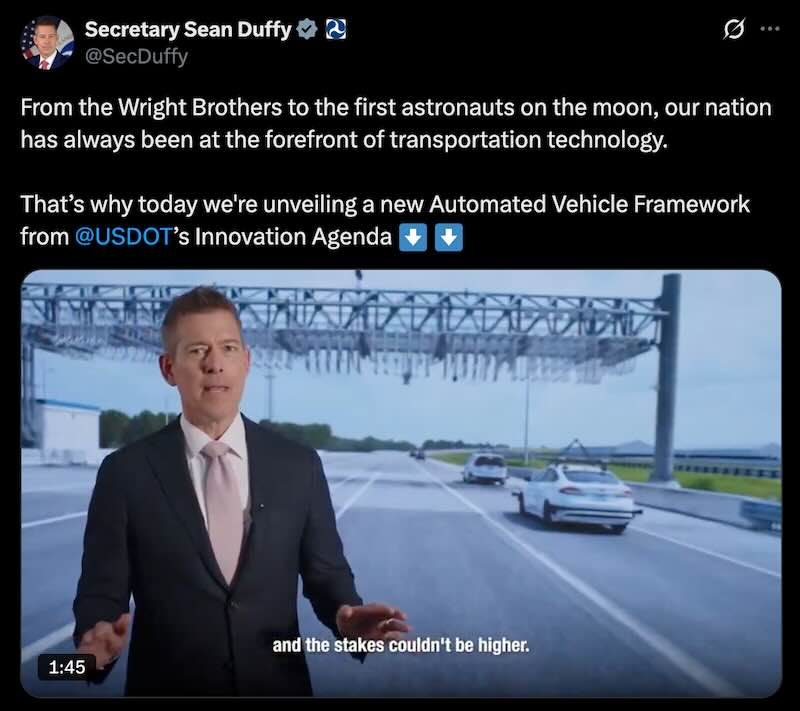The Trump administration unveiled its first significant policy changes for autonomous vehicles today, modifying reporting requirements that could particularly benefit Tesla while maintaining some federal oversight of the emerging technology.
The U.S. Department of Transportation announced an update to autonomous vehicle regulations that maintains crash reporting requirements but significantly reduces their scope. Transportation Secretary Sean Duffy framed the changes as an effort to “streamline regulation and move toward a unified national standard that fosters innovation while prioritizing safety.”
The National Highway Traffic Safety Administration (NHTSA) will now allow domestically produced autonomous vehicles to qualify for exemptions to U.S. auto safety standards previously offered only to imports. This creates regulatory parity between domestic and foreign manufacturers in the autonomous vehicle space.
The most substantial change affects how companies must report crashes involving driver-assistance systems. Under a Standing General Order (SGO) implemented in 2021, companies were required to report any crash involving an autonomous system if it occurred within 30 seconds of the system’s use.
The revised rules maintain the SGO but with critical modifications:
- Only crashes involving Level 4 autonomous vehicles require mandatory reporting
- Level 2 systems only need to report crashes resulting in fatalities or injuries to vulnerable road users
- Redundant reporting requirements have been eliminated
This represents a significant shift from previous requirements, which mandated reporting crashes involving Level 2 systems if they required towing or deployed airbags, even without serious injuries.
These changes could dramatically reduce Tesla’s regulatory burden. Since the original rule took effect, Tesla has reported over 1,500 crashes to federal authorities. Analysis shows that among 45 fatal crashes reported under the SGO, 40 involved Tesla vehicles.
“This change will significantly affect Tesla, since Autopilot and FSD are only Level 2 systems—not full autonomous driving,” explained Sam Abuelsamid, Vice President of Market Research at Telemetry. “Tesla has long argued that the majority of SGO reports come from its vehicles. With this revision, all incidents that don’t involve deaths or vulnerable road users will no longer need to be reported.”
The autonomous vehicle industry has responded positively to the new regulatory framework. Eric, a Lead Engineer for Tesla’s Robotaxi program, called it “a big deal,” noting that “today the regulatory framework for AVs across the US is wildly diverse and complex. Innovation around AVs has a chance to revolutionize transportation safety, accessibility and cost.”
Secretary Duffy underscored the administration’s commitment to technological leadership, posting on X: “From the Wright Brothers to the first astronauts on the moon, our nation has always been at the forefront of transportation technology. That’s why today we’re unveiling a new Automated Vehicle Framework from USDOT’s Innovation Agenda.”

Trump Administration Cuts Red Tape for Autonomous Vehicles
While maintaining crash reporting for the most serious incidents, the Trump administration has clearly signaled its intent to reduce regulatory barriers facing autonomous vehicles. For companies like Tesla with thousands of vehicles using driver-assistance systems on the road, these changes could drive significant regulatory relief as they continue developing autonomous technology.
Related Post
Tesla Launches Employee Robotaxi Testing in Austin and Bay Area Ahead of June Public Release
Nvidia Partners with GM on Self-Driving Tech, Unveils Groundbreaking Cosmos System
NHTSA Launches Probe into Tesla Actually Smart Summon Feature | 2.6M Vehicles Affected
